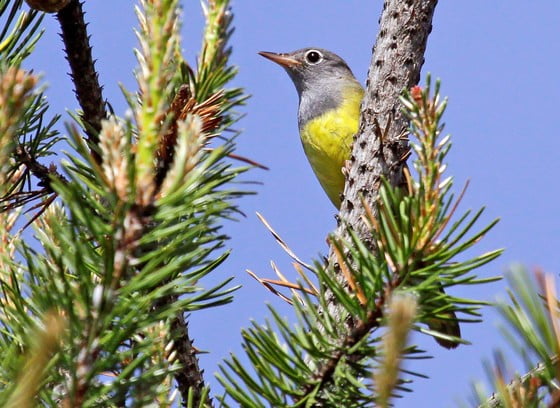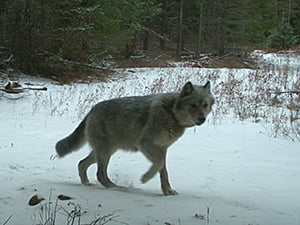WASHINGTON – The Migratory Bird Conservation Commission, chaired by U.S. Secretary of the Interior David Bernhardt, approved $78 million in funding for various wetland conservation projects.
Of the funds issued, $29.4 million was allocated for the U.S. Fish and Wildlife Service and its partners to conserve or restore more than 205,000 acres of wetland and associated upland habitats for waterfowl, shorebirds and other birds in 22 states throughout the United States.
Grants made through the North American Wetlands Conservation Act (NAWCA) come during the 30th anniversary of the Act. The grants will be matched by more than $77 million in partner funds. NAWCA grants ensure waterfowl and other birds are protected throughout their lifecycles.
“Preserving our nation’s wildlife and providing access to our public lands is critically important,” said Secretary Bernhardt. “Landmark legislation like the North American Wetlands Conservation Act has made that possible for all Americans and these treasured natural resources during the past 30 years.”
“Preservation and restoration of these habitats is critical to the health of wildlife,” said Senator John Boozman (R-AR). “As a representative of The Natural State, I understand that investing in conservation efforts protects our valuable resources and supports future generations of outdoor enthusiasts.”
“Wetlands are critical for providing habitat for waterfowl and other wildlife,” said Senator Martin Heinrich (D-N.M.). “As a member of the Migratory Bird Conservation Commission, I am proud to help approve NAWCA grants that preserve wildlife habitats and protect natural resources. I have also introduced legislation to reauthorize the NAWCA program through 2024. By securing these funds, we can support our thriving outdoor recreation economy and ensure our future generations will be able to enjoy our wildlife.”
“Protecting, restoring and managing wetland habitats is important, and it is critical that we invest efficiently to conserve these areas for the use and enjoyment of future generations. NAWCA has been extremely effective by leveraging public and private dollars to conserve our wetlands,” stated Congressman Rob Wittman (VA-1). “As a member of the Migratory Bird Conservation Commission, I am proud of our work to ensure proper funding is going to preserving our wildlife and increasing access to our public lands in Virginia and across the nation.”
“As a longtime member of the Migratory Bird Conservation Commission, I was honored to approve nearly $30 million in federal funding for conservation of more than 205,000 acres. This will allow us to restore critical wetlands and habitats in 22 states, including a 488-acre addition to the San Pablo Bay National Wildlife Refuge in my district,” said Congressman Mike Thompson (CA-05). “This is great news for the conservation of our most beautiful habitats and the future generations who will be able to enjoy those open spaces.”

Wetlands provide many ecological, economic and social benefits such as habitat for fish, wildlife and a variety of plants. NAWCA grants conserve bird populations and wetland habitat while supporting local economies and American traditions such as hunting, fishing, birdwatching, family farming and cattle ranching. This year’s projects include:
- Conserving the Illinois River Legacy – $1 million to protect, enhance, and restore more than 10,533 acres of wetlands on public and private lands within 19 counties bordering the Illinois River Valley.
- South Atlantic Basins: Lower Pee Dee to Okefenokee I – $1 million to protect 7,300 acres of sensitive coastal habitats, allowing for public access and recreation in Georgia and South Carolina.
- Embayed Rivers Initiative II – $1 million to conserve 3,228 acres in three counties and enhance wetlands acres at Pea Island National Wildlife Refuge in North Carolina.
Many birds found in the United States spend part of their time in other countries, and NAWCA provides grants to Canada and Mexico to ensure waterfowl and other birds are protected throughout their lifecycles. The commission approved $33.6 million for 17 projects in those countries.
NAWCA is the only federal grant program dedicated to the conservation of wetland habitats for migratory birds. Since 1989, funding has advanced the conservation of wetland habitats and their wildlife in all 50 U.S. states, Canada and Mexico while engaging more than 6,100 partners in over 2,900 projects. More information about the grant projects is available here.
The commission also approved more than $15.1 million from the Migratory Bird Conservation Fund to conserve 4,886 acres for five national wildlife refuges. These funds were raised largely through the sale of Federal Migratory Bird Hunting and Conservation Stamps, commonly known as “Duck Stamps.”
“The Duck Stamp program has been instrumental in conserving wetlands around the country for decades,” said Bernhardt. “These refuges and many others across the United States show our ongoing commitment to providing more places for Americans to hunt, fish and recreate.”

Funds raised from the sale of Federal Duck Stamps go toward the acquisition or lease of habitat for the National Wildlife Refuge System. Duck Stamps – while required for waterfowl hunters as an annual license – are also voluntarily purchased by birders, outdoor enthusiasts and fans of national wildlife refuges who understand the value of preserving some of the most diverse and important wildlife habitats in our nation.
The following national wildlife refuges are approved for funding:
- Blackwater National Wildlife Refuge , Maryland: $5,980,000
- Laguna Atascosa National Wildlife Refuge, Texas: $1,988,000
- San Bernard National Wildlife Refuge, Texas: $1,690,900
- San Pablo Bay National Wildlife Refuge, California: $3,415,000
- Turnbull National Wildlife Refuge, Washington: $2,092,690

The Blackwater National Wildlife Refuge project will conserve over 2,500 acres of priority habitat for migrating and wintering American black ducks, mallards, Canada geese and greater snow geese, as well as habitat for black rail, salt-marsh sparrow and other wetland-associated migratory birds. The project will add over 2,600 acres to the refuge’s public hunt program, expanding public opportunities for white-tailed deer, sika deer, turkey, and waterfowl hunting.
Since 1934, the Federal Duck Stamp Program and Migratory Bird Conservation Fund have provided more than $1 billion for habitat conservation in the Refuge System.
The National Wildlife Refuge System, managed by the U.S. Fish and Wildlife Service, is an unparalleled network of 567 national wildlife refuges and 38 wetland management districts. There is a national wildlife refuge within an hour’s drive of most major metropolitan areas. Refuges offer world-class public recreation, from fishing, hunting and wildlife observation to photography and environmental education. More than 55 million people visit refuges every year, creating economic booms for local communities.
The Migratory Bird Conservation Commission is chaired by the Secretary of the Interior. Its members include U.S. Senator Martin Heinrich of New Mexico; U.S. Senator John Boozman of Arkansas; Representatives Robert J. Wittman of Virginia and Mike Thompson of California; Sonny Perdue, Secretary of Agriculture; and EPA Administrator Andrew Wheeler. The commission has helped in conserving much of this nation’s most important waterfowl habitat and in establishing or enhancing many of the country’s most popular destinations for waterfowl hunting.
Additional information about North American wetlands and waterfowl conservation can be found at https://www.fws.gov/birds/, which offers waterfowl enthusiasts, biologists and agency managers with the most up-to-date waterfowl habitat and population information.
https://therogueoutdoorsman.com/category/nature-wildlife-news/

